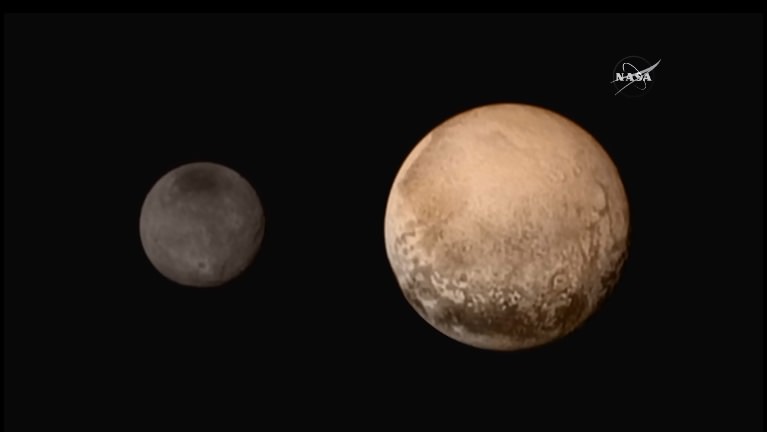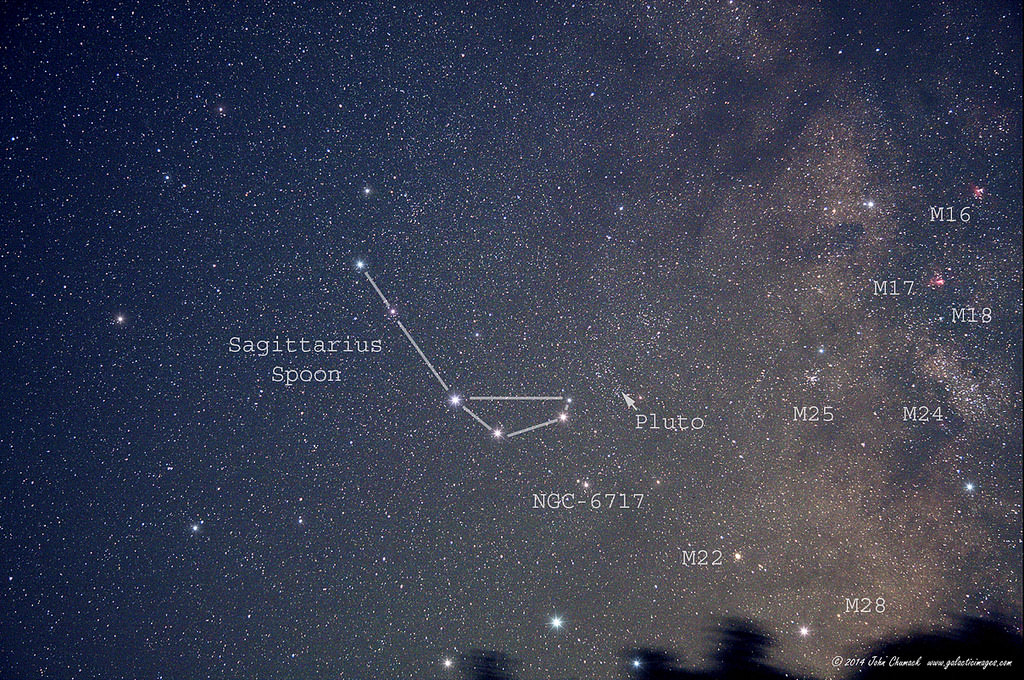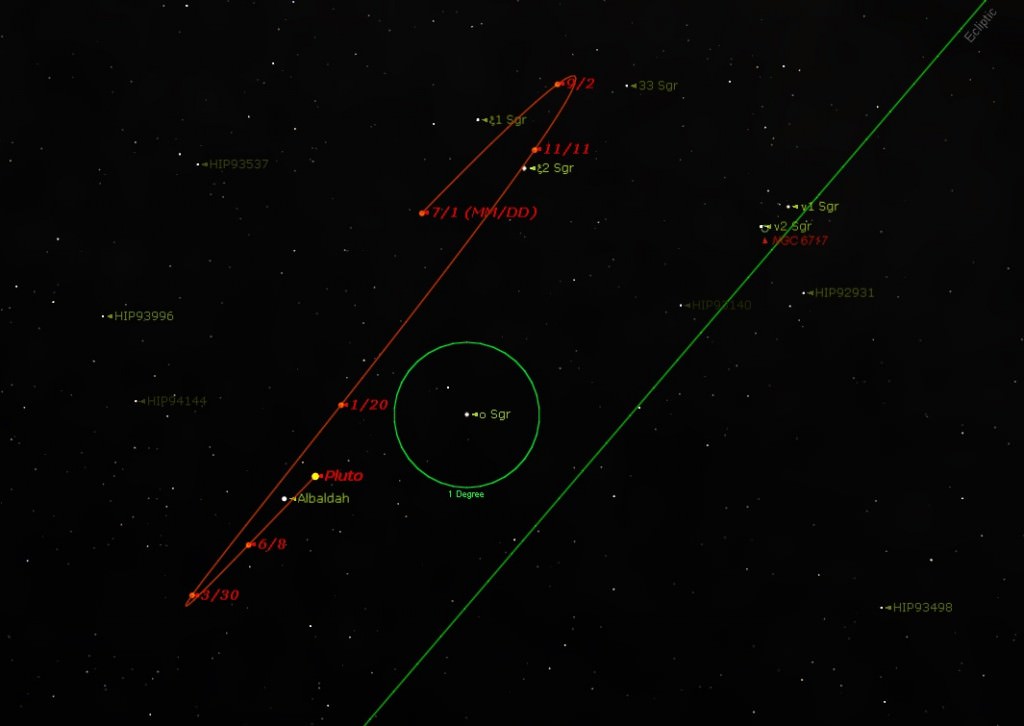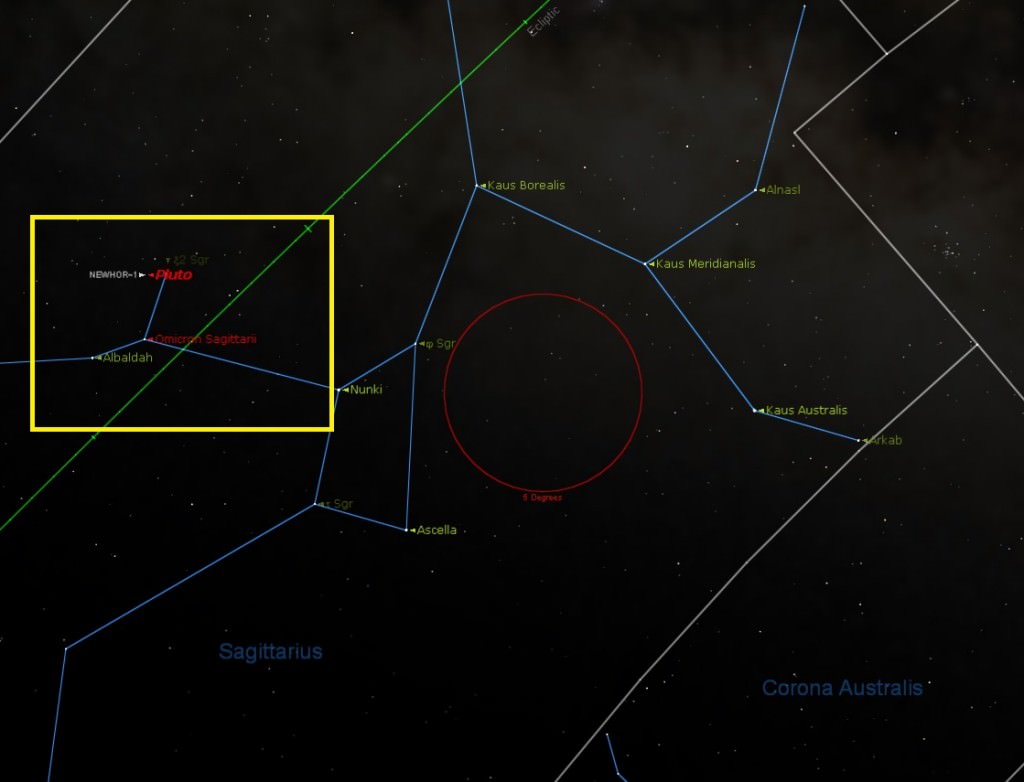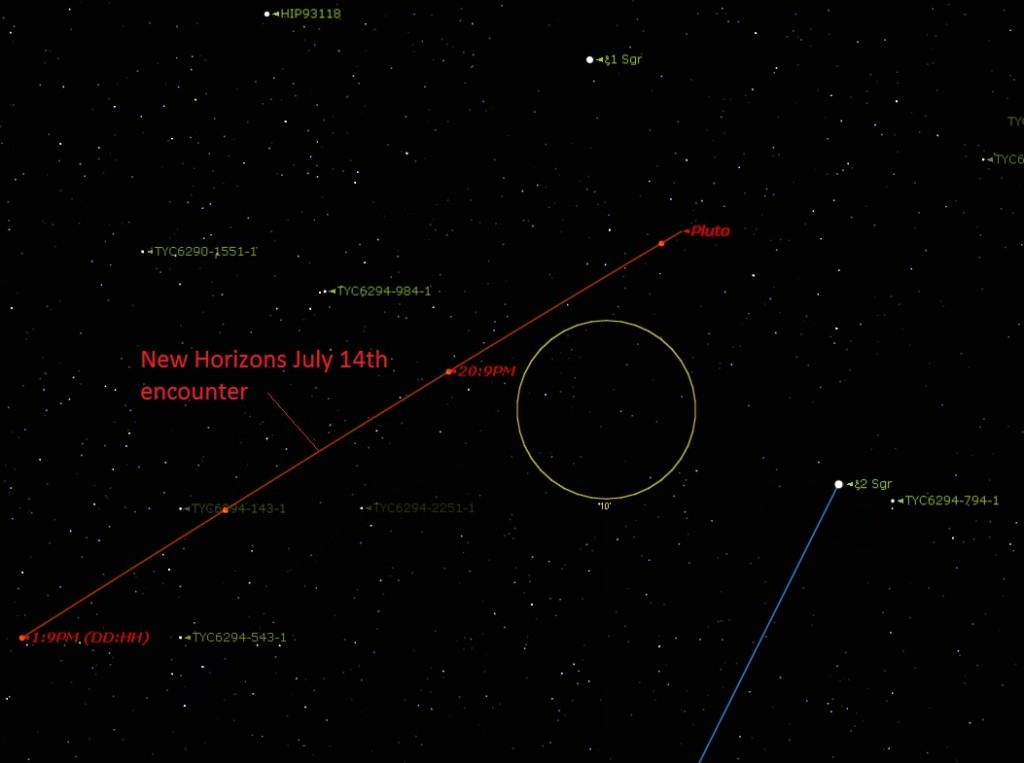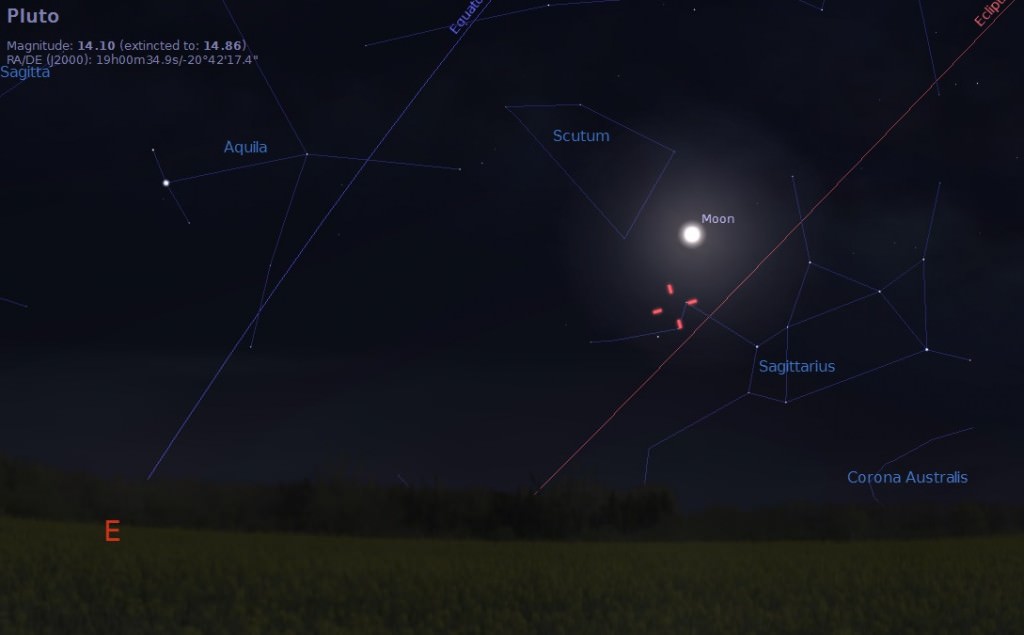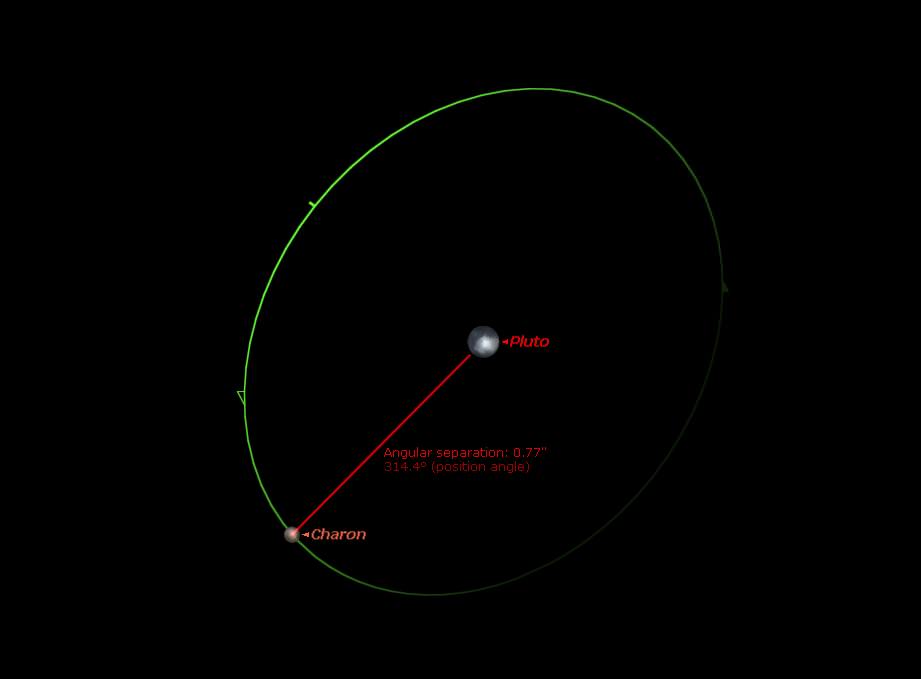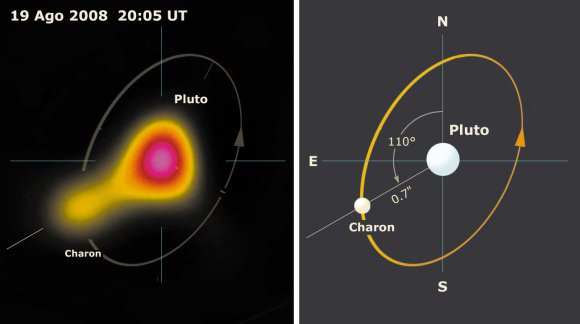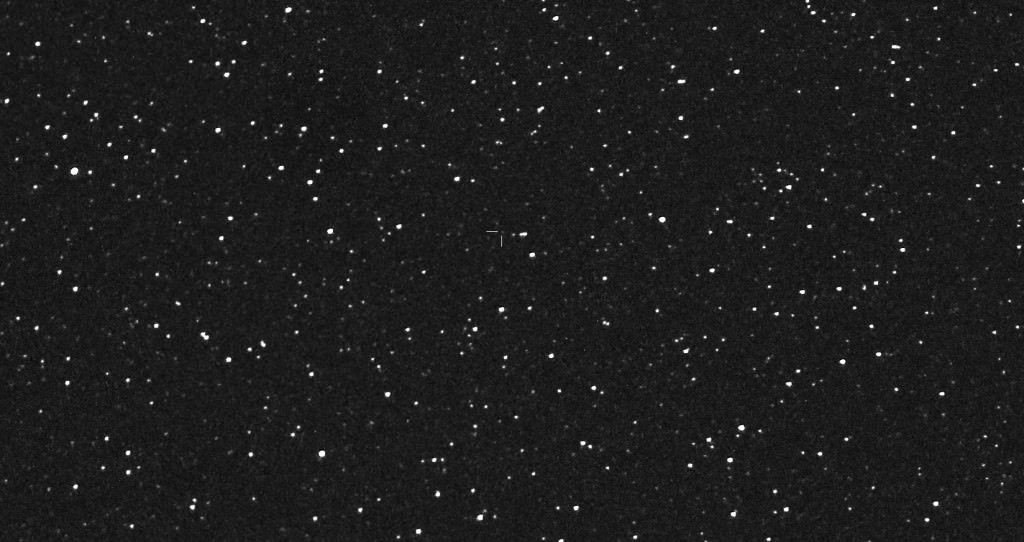‘Here be Dragons…’ read the inscriptions of old maps used by early seafaring explorers. Such maps were crude, and often wildly inaccurate.
The same could be said for our very understanding of distant planetary surfaces today. But this week, we’ll be filling in one of those ‘terra incognita’ labels, as New Horizons conducts humanity’s very first reconnaissance of Pluto and its moons.
The closest approach for New Horizons is set for Tuesday, July 14th at 11:49 UT/7:49 AM EDT, as the intrepid spacecraft passes 12,600 kilometres (7,800 miles) from Pluto’s surface. At over 4 light hours or nearly 32 astronomical units (AUs) away, New Horizons is on its own, and must perform its complex pirouette through the Pluto system as it cruises by at over 14 kilometres (8 miles) a second.
This also means that we’ll be hearing relatively little from the spacecraft on flyby day, as it can’t waste precious time pointing its main dish back at the Earth. With a downlink rate of 2 kilobits a second—think ye ole 1990’s dial-up, plus frozen molasses—it’ll take months to finish off data retrieval post flyby. A great place to watch a simulation of the flyby ‘live’ is JPL’s Eyes on the Solar System, along with who is talking to New Horizons currently on the Deep Space Network with DSN Now.
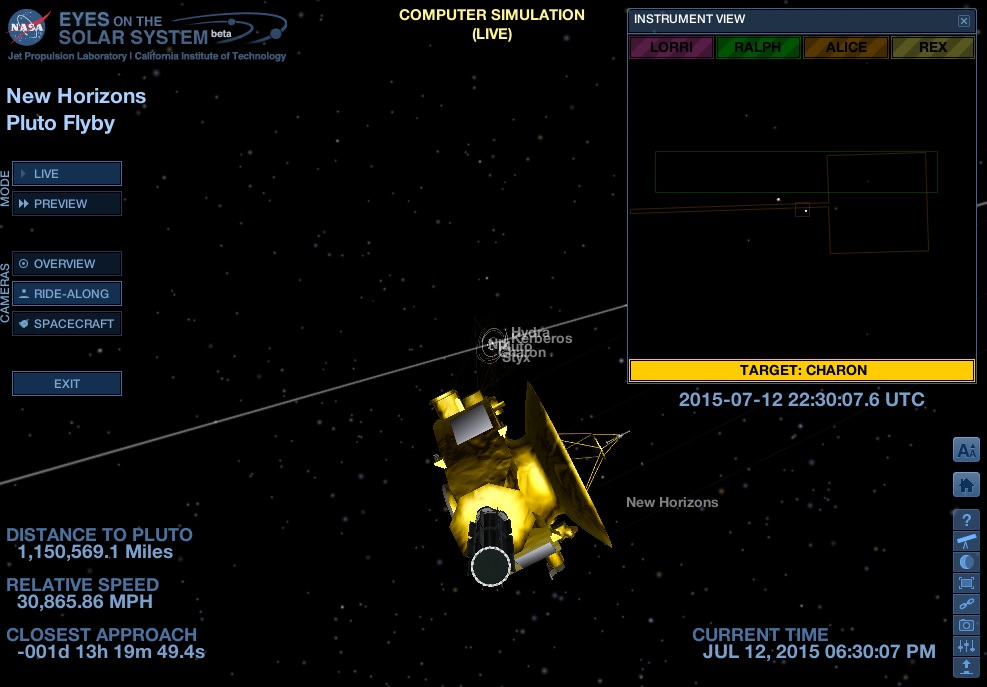
Launched in 2006, New Horizons is about to join the ranks of nuclear-fueled explorers that have conducted first time reconnaissance of solar system objects.
Bob King also wrote up an excellent timeline of New Horizons events for Universe Today yesterday. Also be sure to check out the Planetary Society’s in-depth look at what to expect by Emily Lakdawalla.
Seems strange that after more than a decade of recycling the same blurry images and artist’s conceptions in articles, we’re now getting a new and improved shot of Pluto and Charon daily!
To follow the tale of Pluto is to know the story of modern planetary astronomy. Discovered in 1930 by American astronomer Clyde Tombaugh from the Lowell Observatory, Pluto was named by 11-year old Venetia Burney. Venetia just passed away in 2009, and there’s a great short documentary interview with her entitled Naming Pluto.

Fun fact: Historians at the Carnegie Institute recently found images of Pluto on glass plates… dated 1925, from five years before its discovery.
Despite the pop culture reference, Pluto was not named after the Disney dog, but after the Roman god of the underworld. Pluto the dog was not named in Disney features until late 1930, and if anything, the character was more than likely named after the buzz surrounding the newest planet on the block.
We’re already seeing features on Pluto and Charon in the latest images, such as the ‘heart,’ ‘donut,’ and the ‘whale’ of Pluto, along with chasms, craters and a dark patch on Charon. The conspicuous lack of large craters on Pluto suggests an active world.
The International Astronomical Union (IAU) convention for naming any new moons discovered in the Plutonian system specifies characters related to the Roman god Pluto and tales of the underworld.
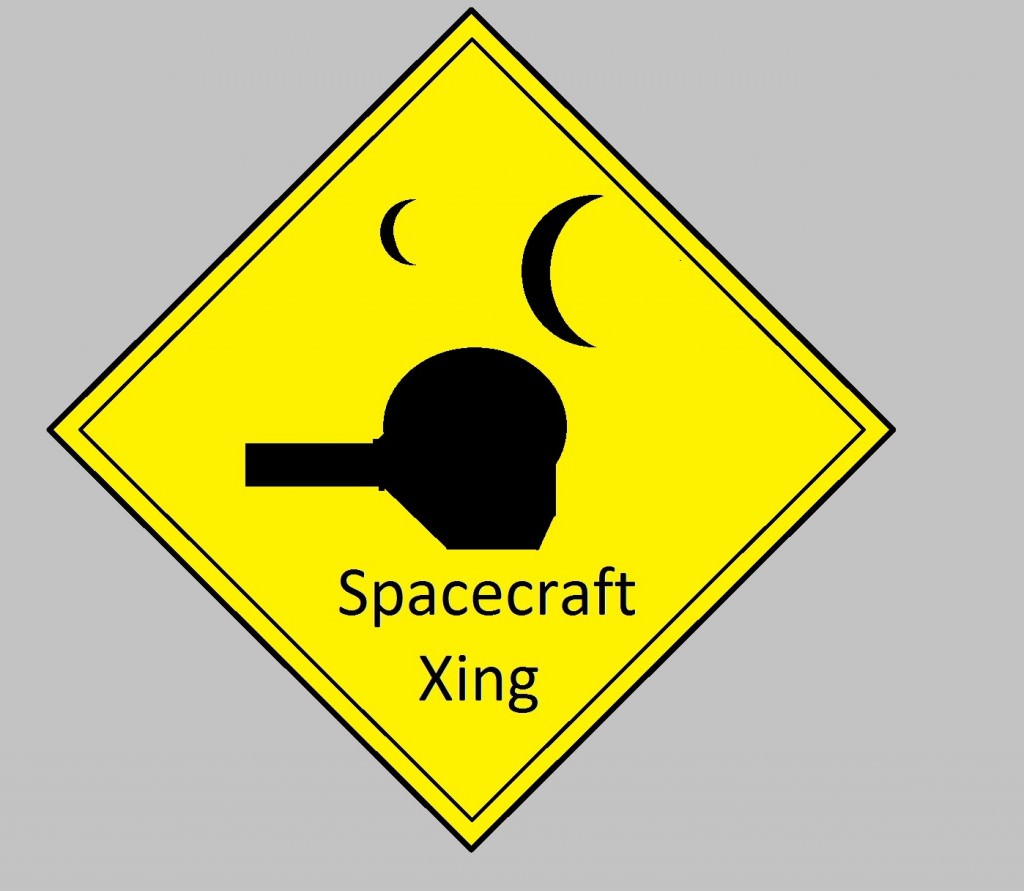
With features, however, cartographers of Pluto should get a bit more flexibility. Earlier this year, the Our Pluto campaign invited the public to cast votes to name features on Pluto and Charon related to famous scientists, explorers and more. The themes of ‘fictional explorers and vessels’ has, of course, garnered much public interest, and Star Trek’s Mr. Spock and the Firefly vessel Serenity may yet be memorialized on Charon. Certainly, it would be a fitting tribute to the late Leonard Nimoy. We’d like to see Clyde Tombaugh and Venetia Burney paid homage to on Pluto as well.
We’ve even proposed the discovery of a new moon be named after the mythological underworld character Alecto, complete with a Greek ‘ct’ spelling to honor Clyde Tombaugh.
The discovery and naming of Charon in 1978 by astronomer Robert Christy set a similar precedent. Christy choose the name of the mythological boatman who plied the river Styx (which also later became a Plutonian moon) as it included his wife Charlene’s nickname ‘Char.’ This shibboleth also set up a minor modern controversy as to the exact pronunciation of Charon, as the mythological character is pronounced with a hard ‘k’ sound, but most folks (including NASA) say the moon as ‘Sharon’ in keeping with Christy’s in-joke that slipped past the IAU.
And speaking of Pluto’s large moon, someone did rise to the occasion and take our ‘Charon challenge,’ we posed during the ongoing Pluto opposition season recently. Check out this amazing capture of the +17th magnitude moon winking in and out of view next to Pluto courtesy of Wendy Clark:
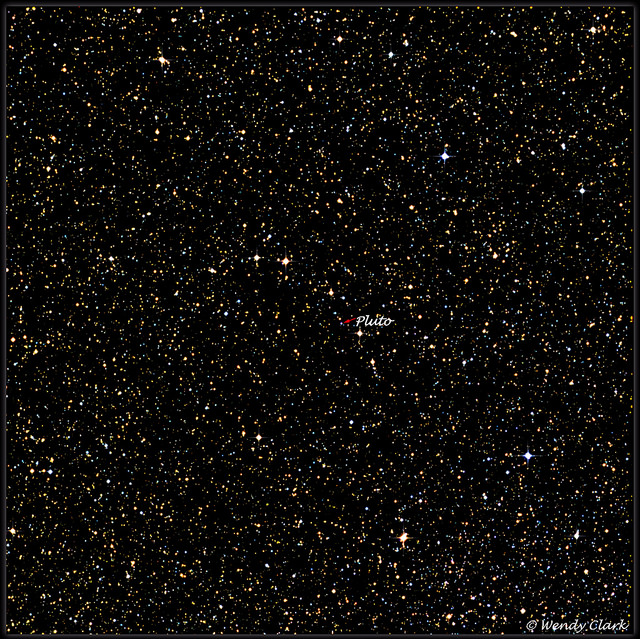
Clark used the 17” iTelescope astrograph located at Siding Spring Observatory in Australia to tease out the possible capture of the itinerant moon.
Great job!
What’s in a name? What strange and wonderful discoveries await New Horizons this week? We should get our very first signal back tomorrow night, as New Horizons ‘phones home’ with its message that it survived the journey around 9:10 PM EDT/1:10 UT. Expect this following Wednesday—in the words of New Horizons principal Investigator Alan Stern—to begin “raining data,” as the phase of interpreting and evaluating information begins.
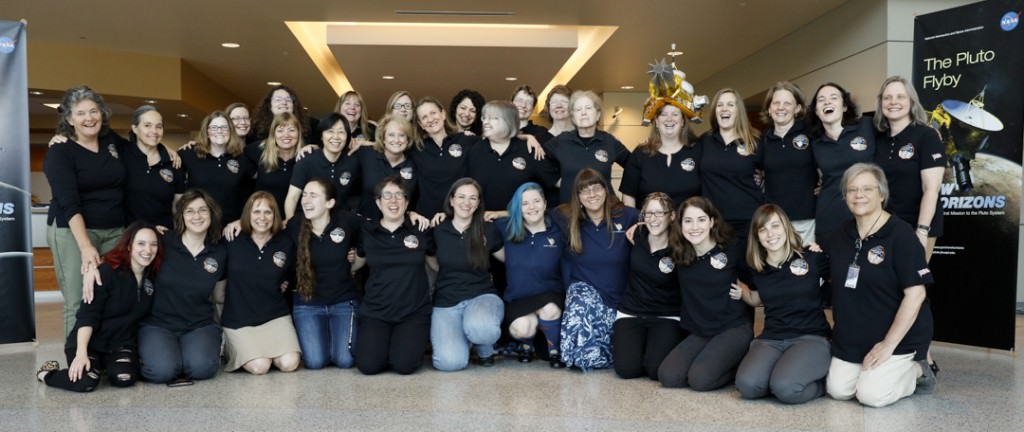
And there’s more in store, as the New Horizons team will make the decision to maneuver the spacecraft for a rendezvous with a Kuiper Belt Object (KBO) next month. Said KBO flyby will occur in the 2019-2020 timeframe, and perhaps, we’ll one day see a Pluto orbiter mission or lander in the decades to come…
Maybe one way journeys to ‘the other Red Planet’ are the wave of the future.’ Pluto One anyone?

